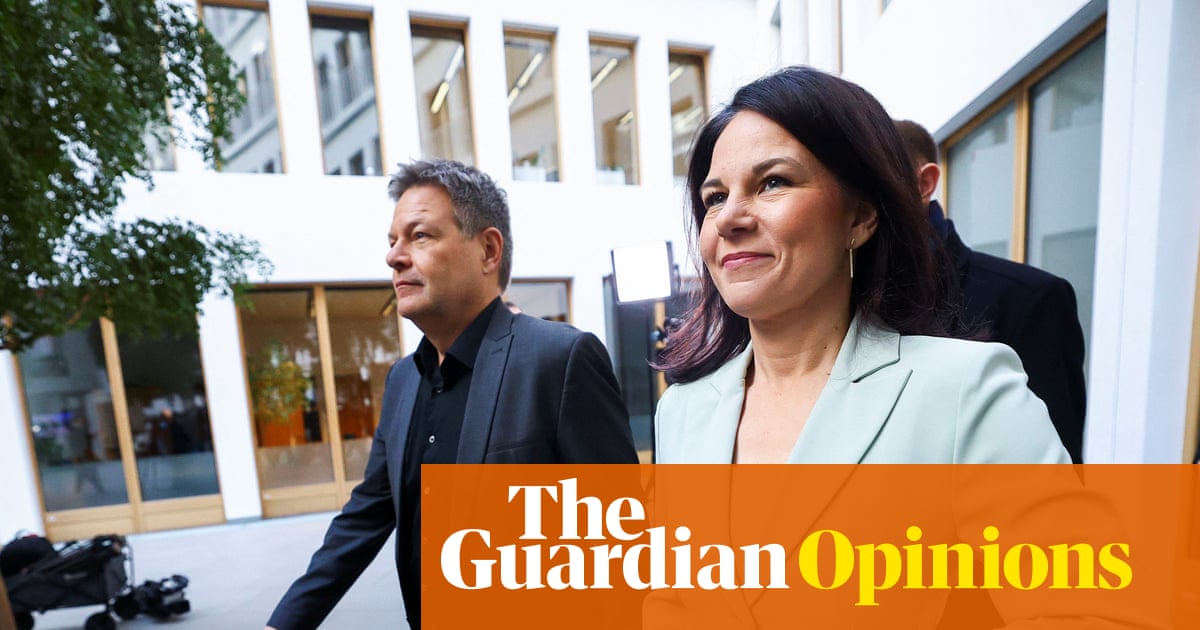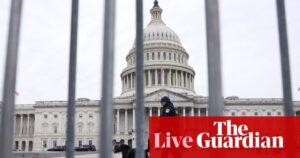
The German Green party, Die Grünen, was once the envy of its sister movements across Europe. In the spring of 2021 it was the most popular party in the country, with a predicted vote share of close to 30%. The world’s press even began to ask whether the next chancellor would be Green. Fast-forward four years and you find a party in crisis: divided, out of power and stagnating at just above 10% in the polls after losing 33 seats in February’s federal election. The party is now searching for a path back to the mainstream – not a moment too soon given the rapid erosion of Germany’s political centre.
One of the Greens’ key problems is personnel. At their peak in 2021 they had two lead figures in Annalena Baerbock and Robert Habeck, who were widely regarded as pragmatists – a prerequisite for effective government in Germany’s compromise-oriented system. After the 2021 election, Baerbock became foreign minister in Olaf Scholz’s SPD-Green-liberal “traffic light coalition”, and Habeck vice chancellor and minister for economic affairs and climate action.
After the collapse of that government, the Greens lost a million votes and fell into fourth place in this year’s elections. Key personnel are departing en masse. Habeck wants to move to Denmark; Baerbock is now president of the United Nations General Assembly. Meanwhile the entire leadership board of the party’s Green Youth wing quit the party altogether. In theory, this should have opened an opportunity for a reset.
The party elected a new leadership duo – Franziska Brantner, 45, and Felix Banaszak, 35 – and new Green Youth leaders: the climate activist Jakob Blasel and the self-proclaimed “leftwing radical” Jette Nietzard. But far from being a reboot, this setup has highlighted deep internal divisions. Since the Greens emerged out of the anti-nuclear, environmental and peace movements of the 1980s and became a serious political player, there has been a rift between the party’s pragmatists, known as Realos, and its fundamentalists, or Fundis.
These old ideological faultlines have reappeared with a vengeance, and follow generational lines. You could practically hear the collective sigh of relief at the top of the party when Nietzard announced that she wouldn’t run for the Green Youth leadership again this autumn. She has repeatedly alienated the centrist voter groups the Greens are trying to win back, appearing in clothing imprinted with the anti-police acronym “ACAB” and the anti-capitalist slogan “Eat the rich”. Last month she pondered whether resistance to any future government coalition containing the far-right AfD should be “intellectual or perhaps with weapons”.
Those may be positions shared by other German leftwingers, but that space on the political spectrum is already occupied by Die Linke, which has recently made gains by taking a more stridently combative position against the right. People as far to the left as Nietzard are more likely to vote Die Linke than Green. The two parties are now neck and neck in the polls, with 10-12% each.
The new Green leadership is determined to resolve the party’s split personality and find its way back to the centre, and to power. Banaszak wants to put clear blue water between his party and the radical left. He told the German press that “it wasn’t a secret” that he and Nietzard “mostly held different opinions”. With her gone, the new leadership is hoping to restore a Realo-dominated party. To this end they are using the parliamentary summer recess to travel to areas of Germany where the “atmosphere is heated”, as their campaign put it, especially working-class strongholds in the industrial Ruhr region and the former East Germany.
The pair were ridiculed for this initially, especially when Banaszak ensured he was photographed sitting on the floor of a train, even though German politicians have unlimited use of first class. But if the trip helps bring the Green leadership closer to Germany’s political realities, it could be more than just a publicity stunt. On a recent visit to Thuringia, an AfD stronghold in the former East Germany, Banaszak was told by the teenage son of a Green mayor that “people here think of the Greens as radical climate activists”, but if they see that Green politicians can bring improvements – if “life is breathed back into a village, roads are repaired” – then their reputation might be restored.
In the West German industrial town of Duisburg, Brantner pondered whether the Greens lost young male voters by failing to offer a positive place for them. Whenever the concept of masculinity was mentioned, she suggested, it was preceded by the word “toxic”. Such self-criticism is new and important. The AfD strategy for coming to power is to provoke a Trump-style polarisation of politics. The Greens will play into their hands if they move further to the left, abandoning the centre ground the AfD seeks to destroy.
There is plenty of room for a mainstream Green party in Germany’s political landscape. They could become the country’s foremost centre-left force if they play their cards right, strengthening moderate politics overall. Part of their potential is that they can work with conservatives. The southern state of Baden-Württemberg has been led by the Green Winfried Kretschmann since 2011, and he is popular even with conservative voters, running a coalition with the centre-right CDU – a model that could also work on the federal level.
Like it or not, there is a conservative majority in German society looking for an expression of its views on the political stage. The CDU has vowed never to work with the AfD, but this binds them to an increasingly unpopular Social Democratic Party (SPD). Adding a CDU-Green coalition to the range of options would strengthen the centre, and in doing so strengthen a democracy that is under attack. Not to mention that it would also restore environmental concerns to a political culture that appears to have sidelined them.
Whether the new Green leaders can take a deeply divided party with them on their path to pragmatic progressivism remains to be seen. But try they must – not just for the sake of their own party, but for the sake of German democracy.
-
Katja Hoyer is a German-British historian and journalist. Her latest book is Beyond the Wall: East Germany, 1949-1990








